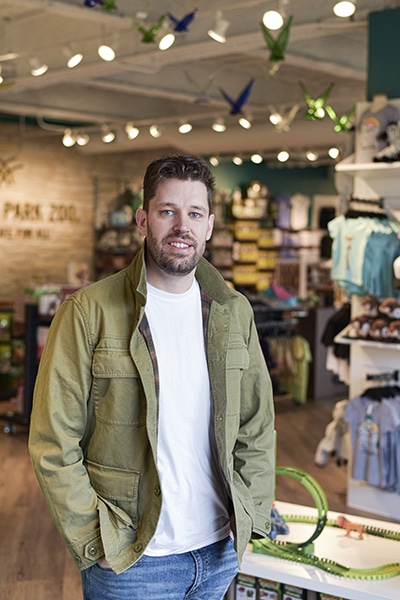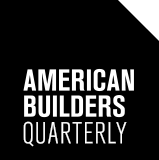|
Getting your Trinity Audio player ready...
|
If Event Network does its job right, nobody knows the company is there. As one of the premier experiential retailers in the world, the company works hand-in-hand with art museums, zoos, aquariums, and other hallmark destinations to seamlessly integrate vital retail spaces that delight visitors and generate income for the host organizations. That means that no two projects are similar, every approach is customized, and optimizing retail space for the Georgia Aquarium or poring over Frank Lloyd Wright’s original Guggenheim plans are just another day at the office for Adam Nelson.

The director of store design has been with San Diego, California-headquartered Event Network since 2015, and since his first major project—the remodel of the National Aquarium retail space in Baltimore—word is spreading about Event Network’s unique and experiential approach to building not only an immersive but also a profit-driving space.
“There is such a difference between something that looks attractive and something designed to be both visually appealing and a successful store,” Nelson says. “Architects do such a great job designing exhibits when they understand the core purpose of a museum, but when it comes to designing a store for a major destination, for some reason retail logic often gets thrown out the window, and what you’re left with is something that just looks pretty in a portfolio.”
Missing the functionality component simply isn’t an option for Nelson. “Our partners are amazing organizations that often rely on their retail revenue to be able to fund community and ecological projects,” he says. “Profitability must be a core pillar of the design.”
Even though Event Network strives to work quietly in the background, people noticed a shift in the store designs. One of Event Network’s customers shared that he had been approached by a handful of colleagues at a conference who were buzzing about the company. “They were calling it ‘those new Event Network stores’ with clear excitement,” Nelson was told.
“Our team had worked tirelessly. These were totally new kinds of spaces and getting that recognition, especially having a partner pass it along, was really exciting,” the director recalls, adding that Corey Folster, Event Network’s director of visual merchandising, was instrumental in bringing Nelson’s designs of the praised spaces to life. “Corey has been my partner-in-crime.”
Embodying Partnerships
It’s necessary to list some of Event Network’s partners precisely because it proves the trust the young San Diego company has built for itself with worldwide recognized and prestigious institutions. The American Museum of Natural History in New York, Los Angeles’ Griffith Observatory, the Solomon R. Guggenheim Museum in New York City, Longwood Gardens in Pennsylvania, and the Museum of Science and Industry in Chicago are just a few of the names who have seen fit to become Event Network partners.

“Trust is the most important component when sharing new designs with our partnerships,” Nelson says. “There has to be a willingness to adapt and move beyond what has been in the past, and there has to be some level of trust that what we’re going to create is going to work.”
That adaptation includes truly unprecedented efforts on Event Network’s part to create spaces that fall in line in both mission and aesthetics with its partners. Baltimore’s National Aquarium is one of the first great examples of bringing the mission and environment together, as Event Network found unique and creative ways to weave sustainability into their retail spaces.
“This is an organization that had shifted from an entertainment venue to being an educational institution whose mission is to save and preserve their local ecology,” Nelson says. “We’re an extension of them, and we want our mentality to fundamentally be in alignment.”
Leaving Plastic Behind
That means the standard plastics used for signs, shelves, and the dozens of other plastic touchpoints had to be rethought. All wood products are Forest Stewardship Council (FSC) certified. The carpet is produced from recycling fishing nets that have been recovered from ensnared coral reefs. Even the giant sculpture that appears to be a school of 500 fish is actually made of recycled bottles, which becomes intentionally obvious upon closer inspection. “We’ve layered all of these elements in to create this immersive space that people may or may not know is highly sustainable,” Nelson says.
An equally unique approach to sustainability was taken with the recent remodel of Chicago’s Lincoln Park Zoo retail space. All building materials have been evaluated to ensure they reinforce the zoo’s mission. LED lighting is everywhere. Tree structures in the store sprout leaves made from Falconboard, an alternative to foam board made from recycled materials. Those leaves are magnetized and can be changed out and reused seasonally to coincide with the greens of spring and the golds of fall.

“Creating these sustainable practices and spaces is one problem to solve after another, and I love that continuing evolution,” Nelson says. “From the visual to the engineering to deploying it in a great way, we do what’s right for each partnership.”
The director’s latest project to open was three retail spaces for New York’s Hudson Yards, a massive luxury and retail landmark. “There was an expectation that when a partner is spending billions on a building, the retail fixtures also had to look the part,” Nelson says with a laugh.
During this project his greatest moment of pride came from an interaction with a lighting designer who had worked at other observation deck venues. “As I was walking away, he said that he had never really thought about the retail experiences at other locations,” the director remembers. “But when he came into ours, he said he’d never felt anything like it. It was such an immersive experience that it caught him off guard.”
Coming from a fellow designer, that means a lot to Nelson, but he has other ways to measure success. “Some parents are frustrated when their kids like the museum store as much as they like the museum,” Nelson says. “For me, that’s mission accomplished.”



